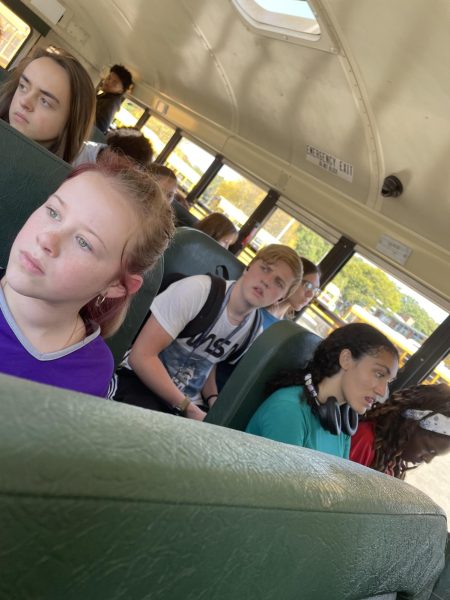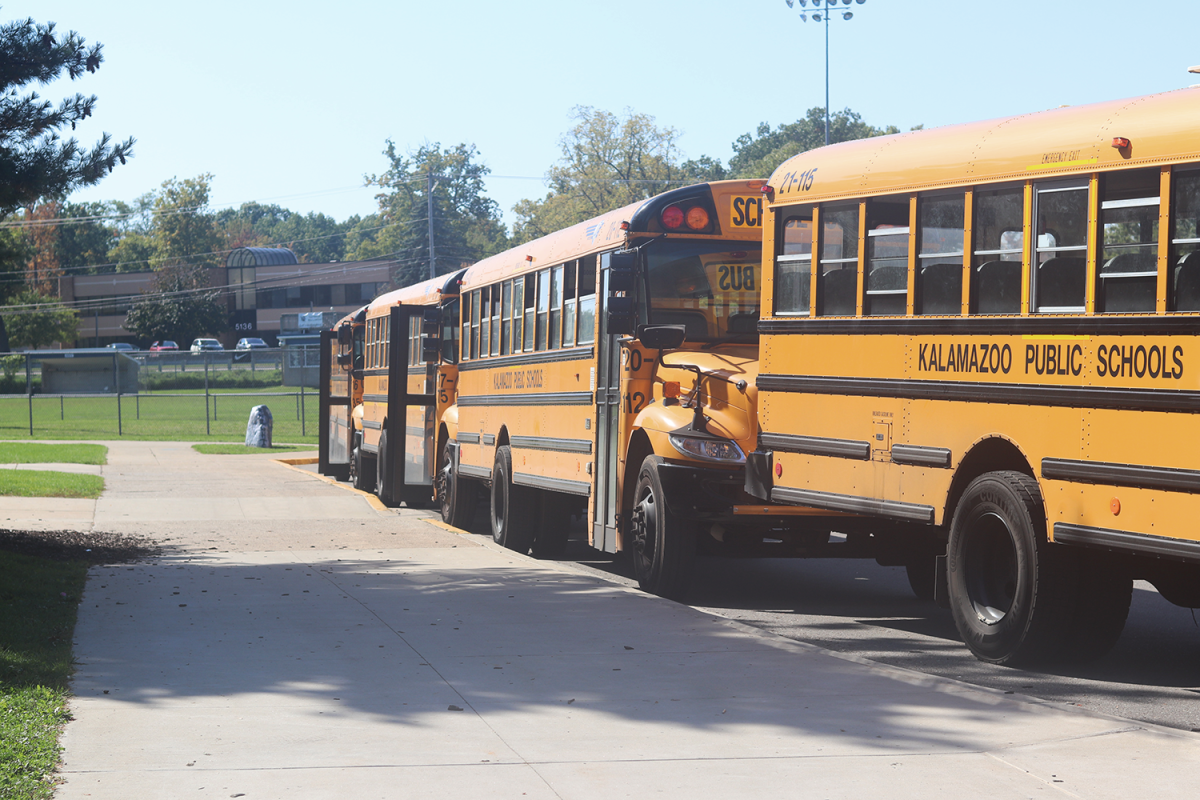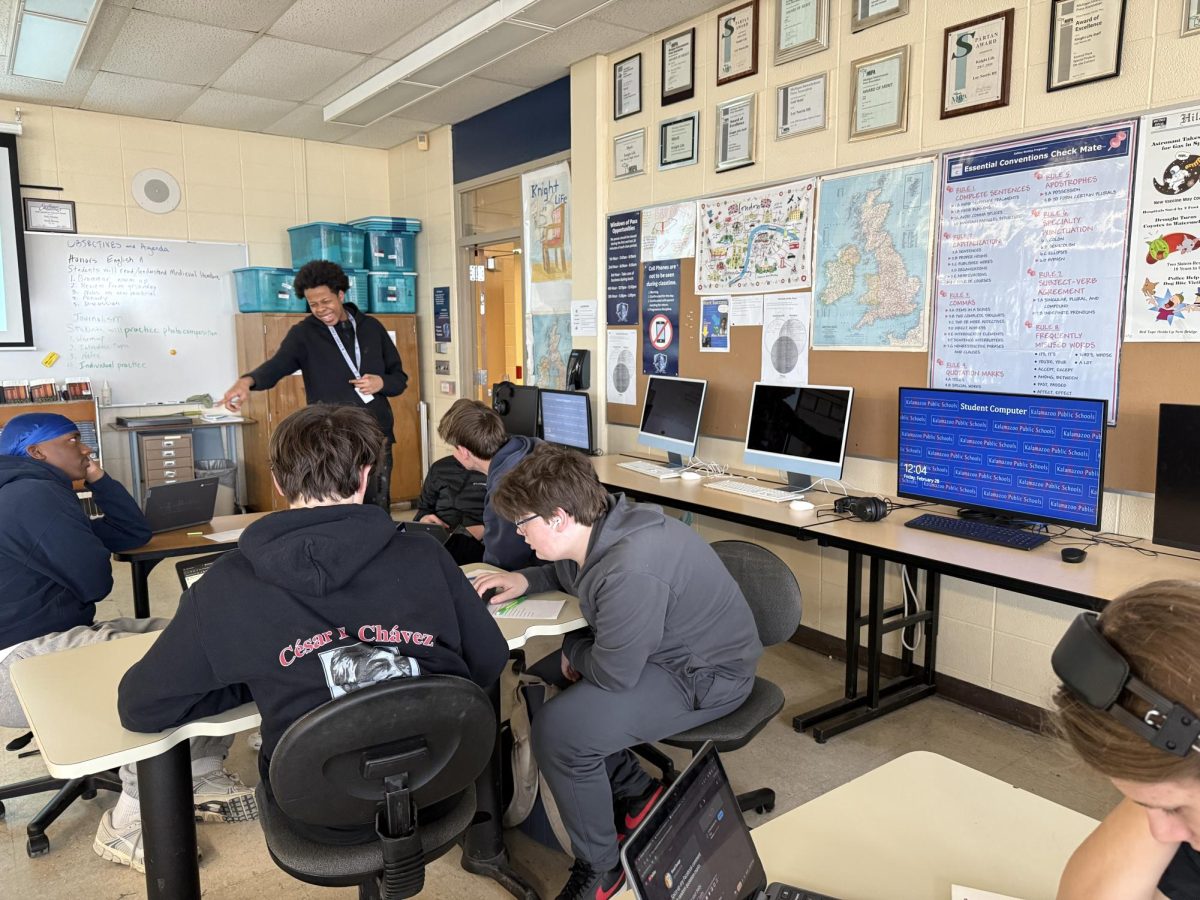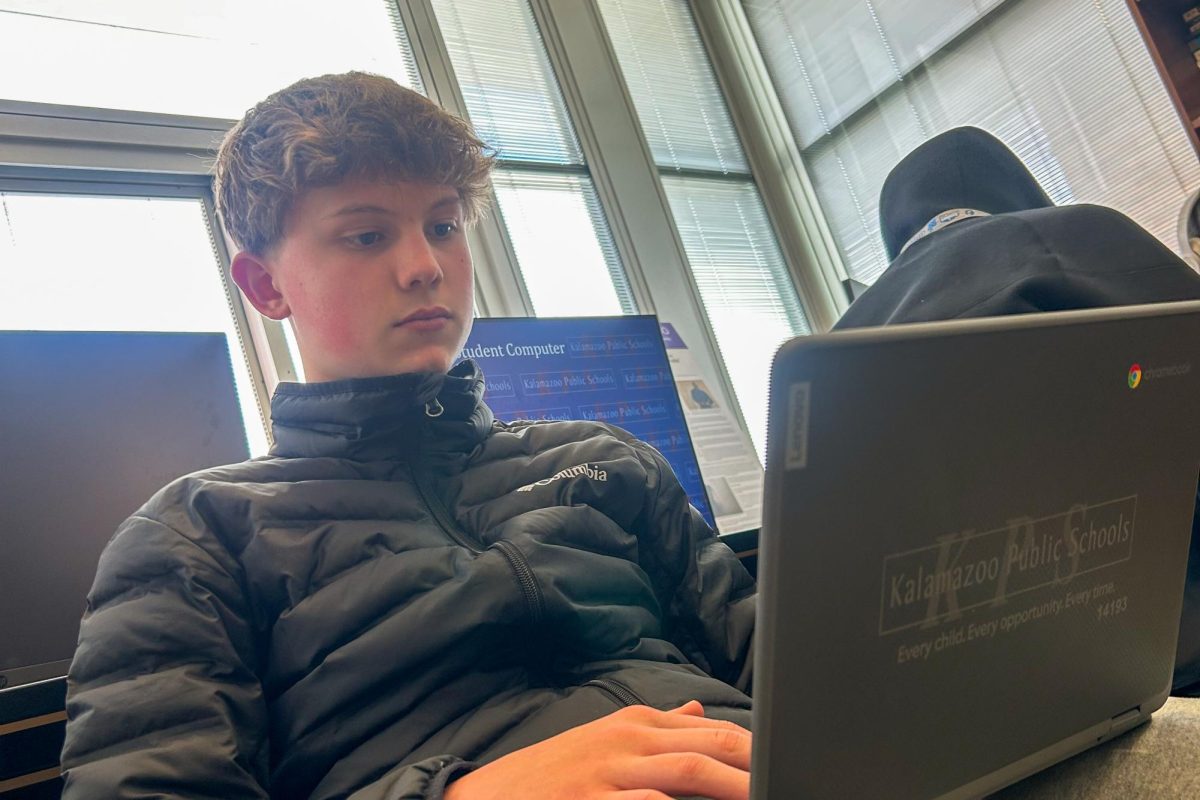In the past few school years, bus driver shortages, among other issues, have caused countless problems within the Kalamazoo Public Schools (KPS) transportation system.
These problems have left bus drivers, students and parents struggling. The department of transportation has been working hard to remedy this, but some students and drivers continue to have unmet expectations.
Last school year, one of the biggest problems with the KPS bus system was the number of cancellations. On any given day, around 4 p.m., lists of canceled buses would be emailed out. Students would find out their bus was canceled for the next day, leaving them and their parents to have to figure out a way to get to school.
“We couldn’t hire enough bus drivers, which caused us to have a lot of cancellations,” said Executive Supervisor of Transportation, Terri Aman.
Aman attributed the shortage to the fact that a lot of people just didn’t want to be bus drivers.
“It’s a really hard job. You have to pass very difficult tests to become a driver, and you have to get a license and you’ve got to have the patience to work with kids,” Aman continued. “It’s hard to find good people because we don’t want to hire just anyone.”
Sasha Haywood, a KPS bus driver of 10 years, thought the shortage was mainly caused by the pay.
“The pay wasn’t good enough for people to sit here. It wasn’t enough money to come into work everyday and risk getting hit by a kid or a parent or cursed out. Nobody wants to deal with that,” said Haywood. “A lot of people felt like they could go work a 40-something hour job somewhere else.”
This school year, however, there have been no bus cancellations due to the new hires that are likely a result of the pay increase for bus drivers that was approved by the KPS board on July 10, bringing starting wages from $14.60 an hour to $19 an hour, and Aman intends to keep it that way.
“We are working hard to keep drivers. We aren’t hiring any more bus drivers at the moment,” said Aman.
The pay raise has also made a huge difference for many drivers. Haywood says her job now provides a living wage for her and her family.
“I normally have to work two different jobs to make ends meet… but this year it went up a lot, so now I can make what I normally would working a full-time job and make the same amount only working six hours a day,” said Haywood.
Despite all of these changes, many Loy Norrix students are still unhappy with some of the elements of transportation, namely the time buses arrive at school.
Sophomore Issac Ruben usually gets picked up by the bus at 6:35 a.m. His bus arrives at school at 6:50, about 41 minutes before first period starts.
“We wait in the bus for a little bit, then we wait outside until they let us into the tower,” said Ruben.
Senior Nina Holm deals with similar things. The tower doors open at 7:00 a.m. and most of the buses get to school before then.
“I think the biggest problem is that all of the buses get to the school at the same time before the doors even open, so we are all just standing and waiting outside,” said Holm. “It’s a huge crowd, and even once the doors open, it takes us another 10 minutes to get into the tower.”
This early arrival time also means earlier wake-up times for students.
“I know if I drove myself to school or if the buses came later, I would definitely wake up later. If I could leave my house like half an hour later, I would be able to wake up much later,” said Holm.
Another major problem for students is the overcrowding on their buses.

“There’s so many kids on my bus, and the bus is so crowded that people have to sit three to a seat everyday,” said Holm.
But all these problems are not an easy fix. It takes a lot of organizing to get everyone on a bus that works for them.
Aman said, “It is kind of like a puzzle. We have to put people who need rides together and figure out which bus everyone should go on to make sure everyone gets to school on time and the buses aren’t overcrowded.”
Because there are only so many buses and a certain amount of money to spend on buses, it can be difficult to make the system function perfectly.
The transportation department is also hoping to roll out an app that would ease the bus riding process for both drivers and families.
“Students and parents could see how far their bus stop is and what time your bus is supposed to come,” said Aman.
But even with these improvements, bus driving is still definitely a job that comes with many challenges.
“We have a hard job, we deal with students, we deal with behaviors, we deal with kids with disabilities, we deal with parents, we get cursed out,” said Haywood. “You can deal with a kid who is trying to fight you or hit you. We are putting ourselves in harm’s way.”
Bus driving is a hard job and has a lot of negatives, but there are positives as well. Haywood likes that she can take her children to work without having to pay for daycare. She also likes watching the kids grow.
“I like the kids, they get on the bus and say ‘good morning, have a great day.’ It’s a cool job.” Haywood continued. “I like seeing kids, different personalities. You get a lot of love and a lot of support from the children. Kids always come and give you hugs, and you see their growth from the first day. I’ve got kids now that I see that used to ride my bus, and they remember me. It’s like you grow with the kids and you become family.”










Levi elsholz • Oct 10, 2023 at 5:54 pm
Yeah well my bus ride is an hour long! I demand justice!!!
alice damashek • Oct 10, 2023 at 1:36 pm
coolio doolie!!!